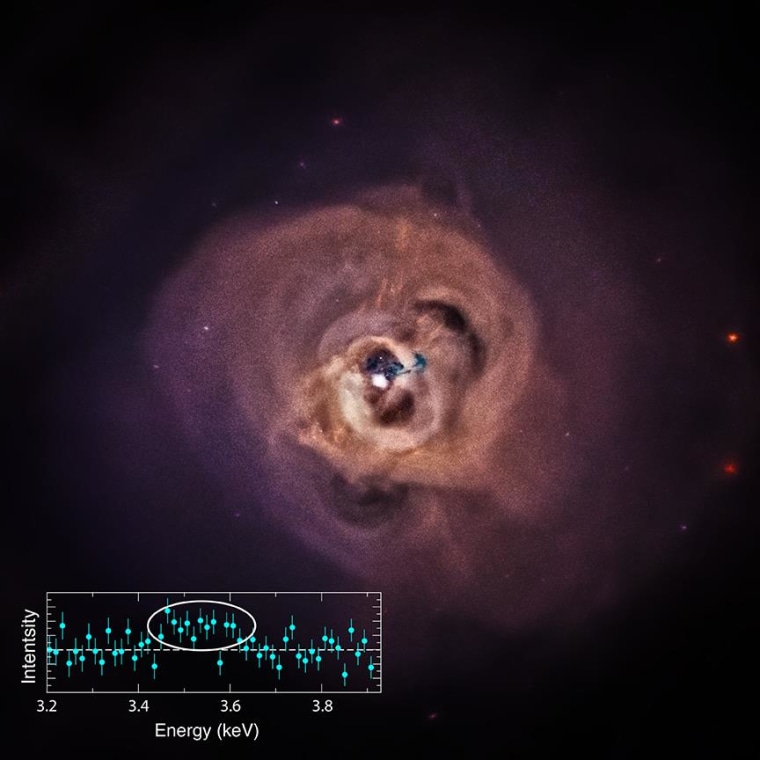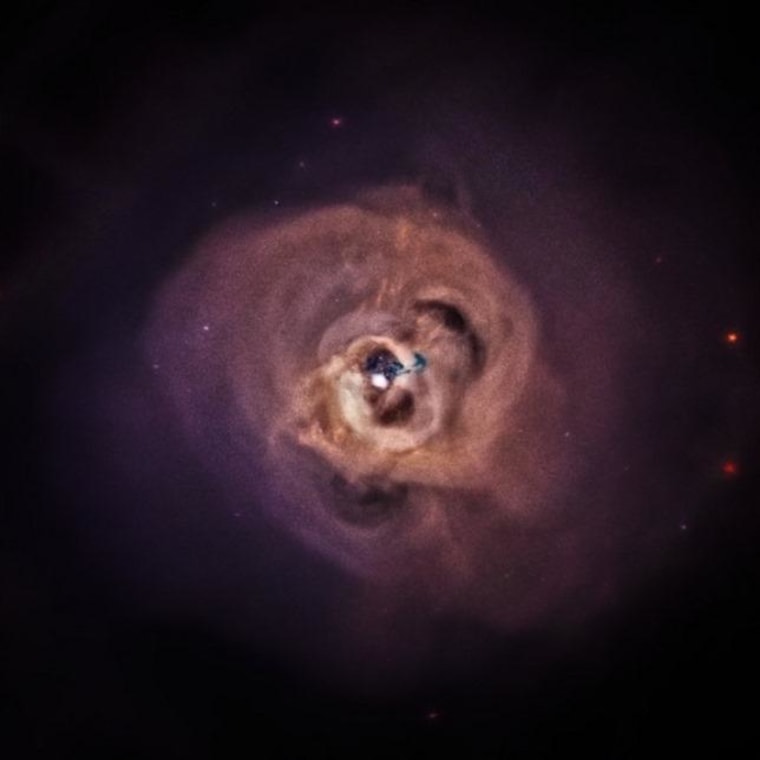Two spacecraft have detected a possible signal of dark matter, the mysterious, invisible stuff that makes up most of the material universe.
NASA's Chandra X-ray Observatory and the European Space Agency's XMM-Newton satellite spotted a spike of X-ray emission coming from more than 70 different galaxy clusters. While the origin of the X-rays remains unclear at the moment, they could be generated by the decay of a certain type of dark-matter particle, scientists said.
Sign up for Science news delivered to your inbox

"We know that the dark matter explanation is a long shot, but the payoff would be huge if we're right," study lead author Esra Bulbul of the Harvard-Smithsonian Center for Astrophysics said in a statement. "So we're going to keep testing this interpretation and see where it takes us." [Gallery: Dark Matter Throughout the Universe]
Dark matter is so named because it neither absorbs nor emits light. Astronomers know that dark matter exists because it interacts gravitationally with the normal matter we can see and touch. It's thought to make up more than 80 percent of all matter in the universe.
Over the years, researchers have proposed a number of exotic particles as candidate components of dark matter: One of the candidates is known a sterile neutrino — a hypothetical type of neutrino that emits X-rays when it decays.
Researchers say the signal observed by Chandra and XMM-Newton could have been produced by sterile neutrinos. But that's far from a sure thing, since the detection of the X-ray spike pushed both observatories to their sensitivity limits.
Normal matter in the galaxy clusters may also be responsible for the emission. This interpretation doesn't mesh well with current thinking about galaxy clusters and the atomic physics of hot gases, however. There's also a chance that the observations are just an instrumentation glitch. Further analysis of the Chandra data, in combination with other X-ray observations, should eventually tell the tale.
The new paper was published in the June 20 issue of The Astrophysical Journal. This is a condensed version of a report from Space.com. Read the full report. Follow Mike Wall on Twitter and Google+. Follow Space.com on Twitter, Facebook or Google+.
